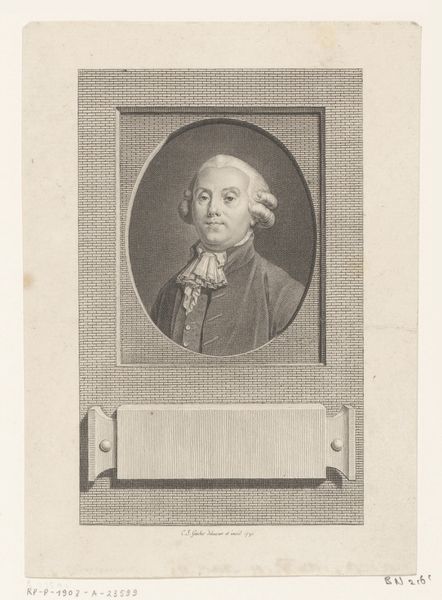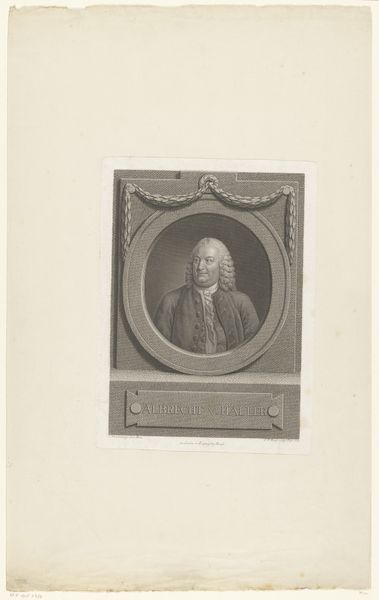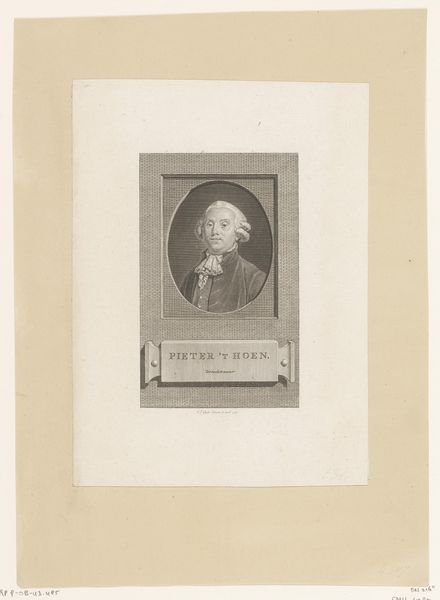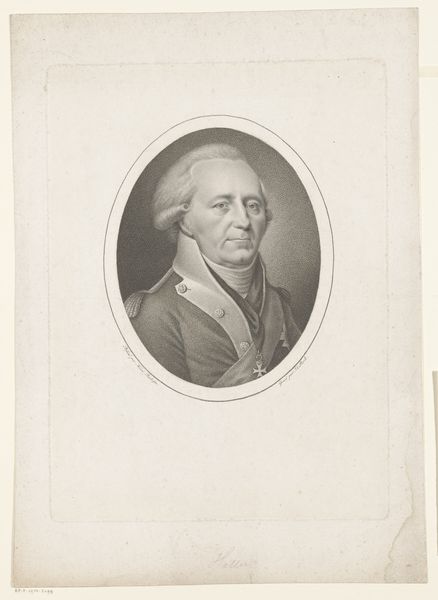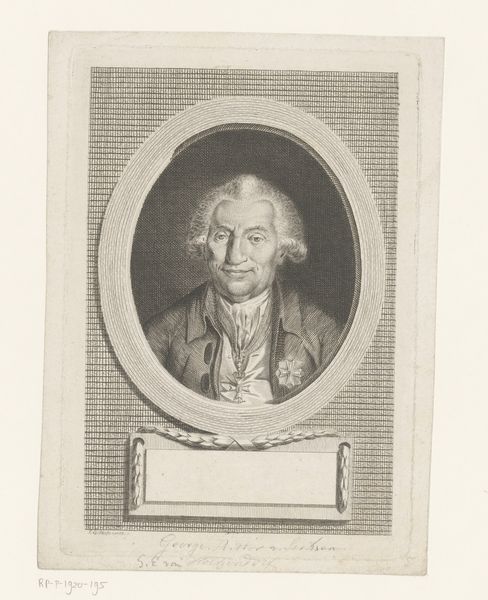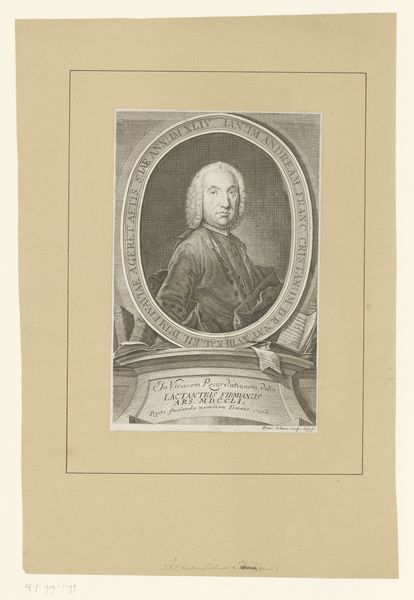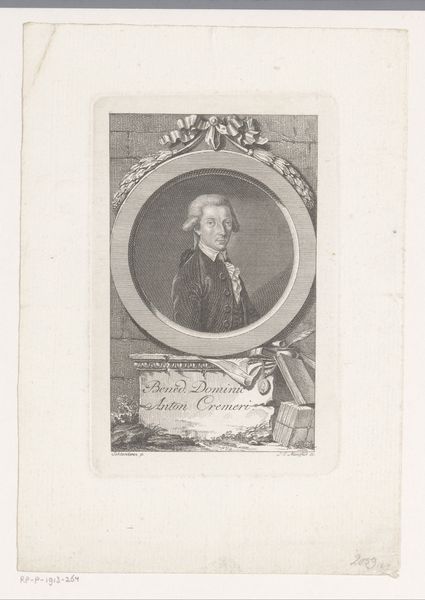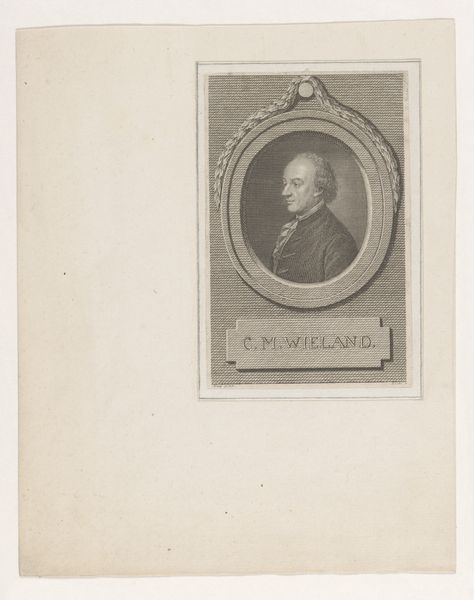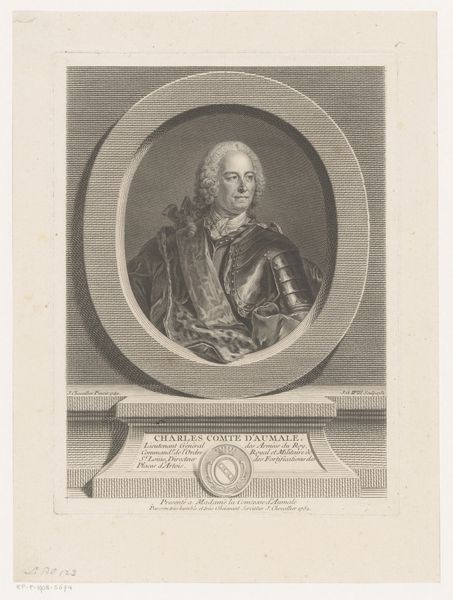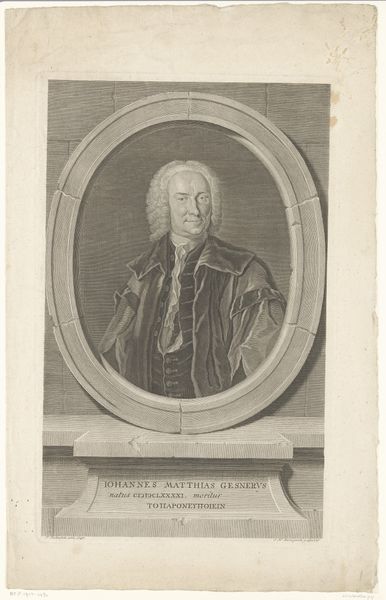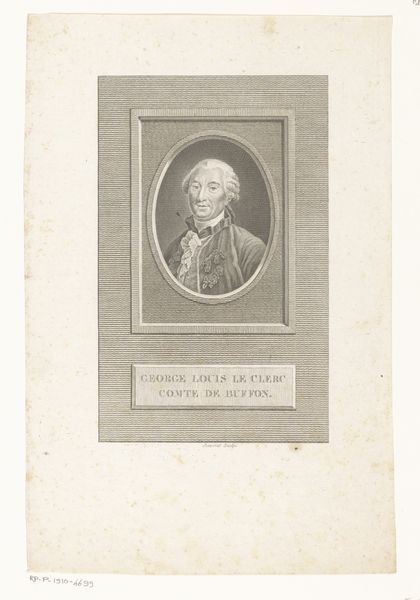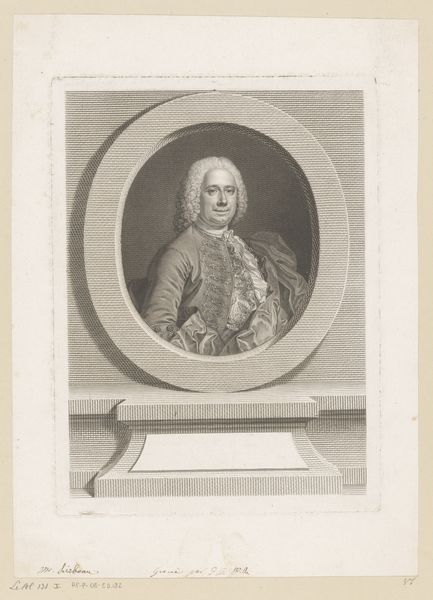
print, engraving
#
portrait
#
neoclacissism
# print
#
academic-art
#
engraving
Dimensions: height 238 mm, width 168 mm
Copyright: Rijks Museum: Open Domain
Curator: This engraving from 1792, titled "Portret van Johannes Meijer", presents a striking depiction of a clergyman. What grabs your attention first? Editor: The staged monumentality of it! The portrait, held in that circular frame decorated with foliage, seems to stand as an austere tribute to Johannes Meijer—almost theatrical in its rigidity. Curator: Indeed. The print is the work of Johann Gottfried Pflugfelder, made after the original by Christoph Friedrich Reindel. What fascinates me is how the composition embodies the Neoclassical movement, with its controlled lines and balanced form. Editor: Absolutely. Neoclassicism loved order and reason, mirroring the social and political climate where patriarchy was so rigid. I wonder how Meijer himself experienced such a portrait of himself, being memorialized in such a manner? Was he comfortable in this imposed monumentality, or was it simply expected of a man in his position? Curator: It’s an interesting point! The inscription below provides further context: "Lutherisch Predikant in’s Haage, geboren in Amsterdam 1717." Editor: Right. Placing him so specifically, like a specimen. It makes me think of the power dynamics inherent in portraiture, particularly in the late 18th century when social hierarchies were so explicitly reinforced. Curator: But also of individual worth, perhaps? The delicate engraving lines capture the minister's likeness, his gentle features. Editor: I suppose. Yet, that formality and that need for elevation feel like a response to the turbulence of the era—the anxieties of a crumbling aristocracy perhaps manifesting in these stiff portrayals. Curator: True, it's not all flattering ease. I see a society searching for stability through a kind of frozen grandeur. I’ll be pondering what this image would represent to the many during this era of social turbulence and revolution! Editor: And I will be wondering about those unseen power structures dictating what is deemed worthy of representation—a print in a museum dedicated to the elites—while the struggles of the marginalized often remain erased. A frozen grandure, as you said. I like that.
Comments
No comments
Be the first to comment and join the conversation on the ultimate creative platform.
